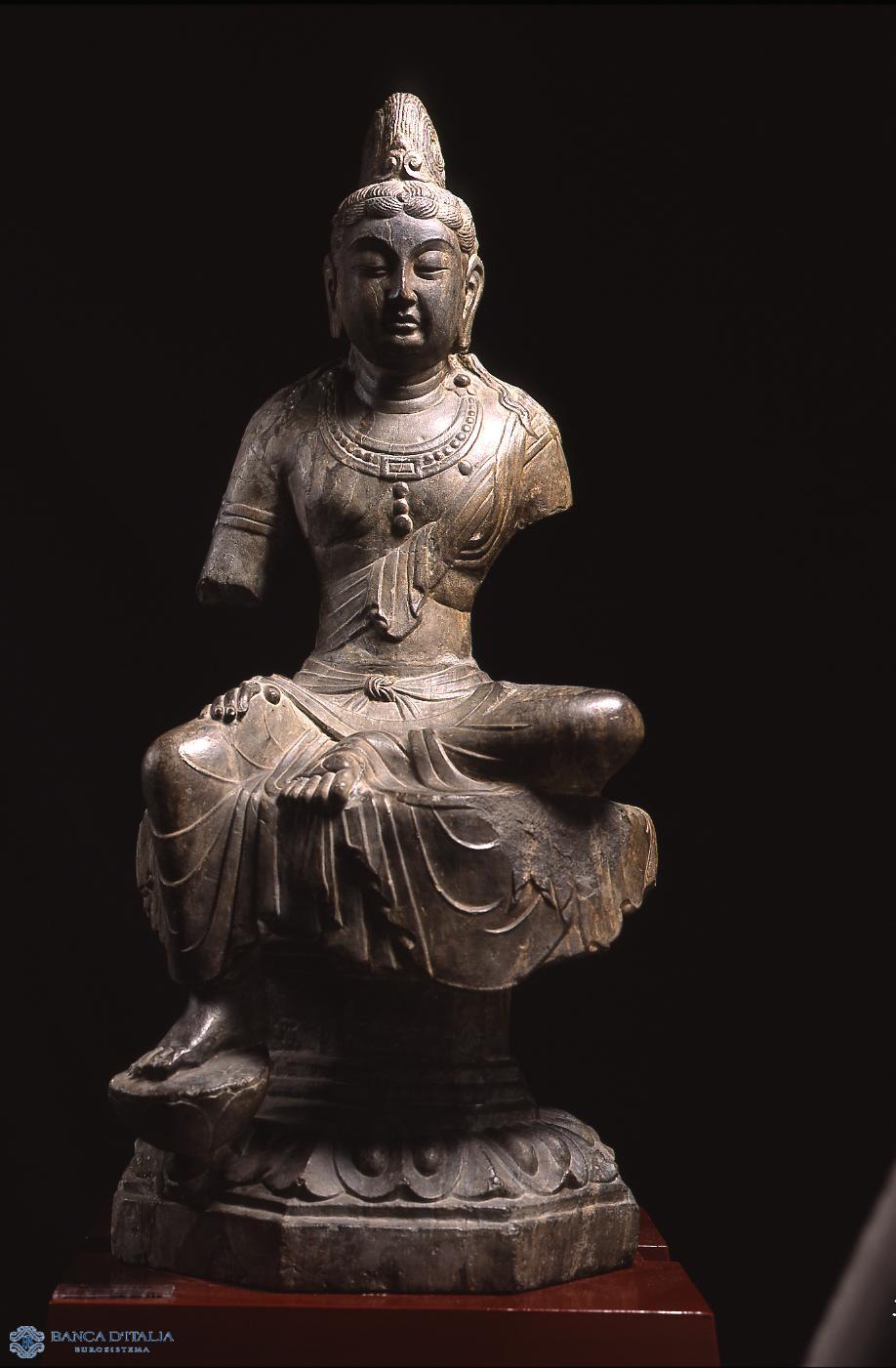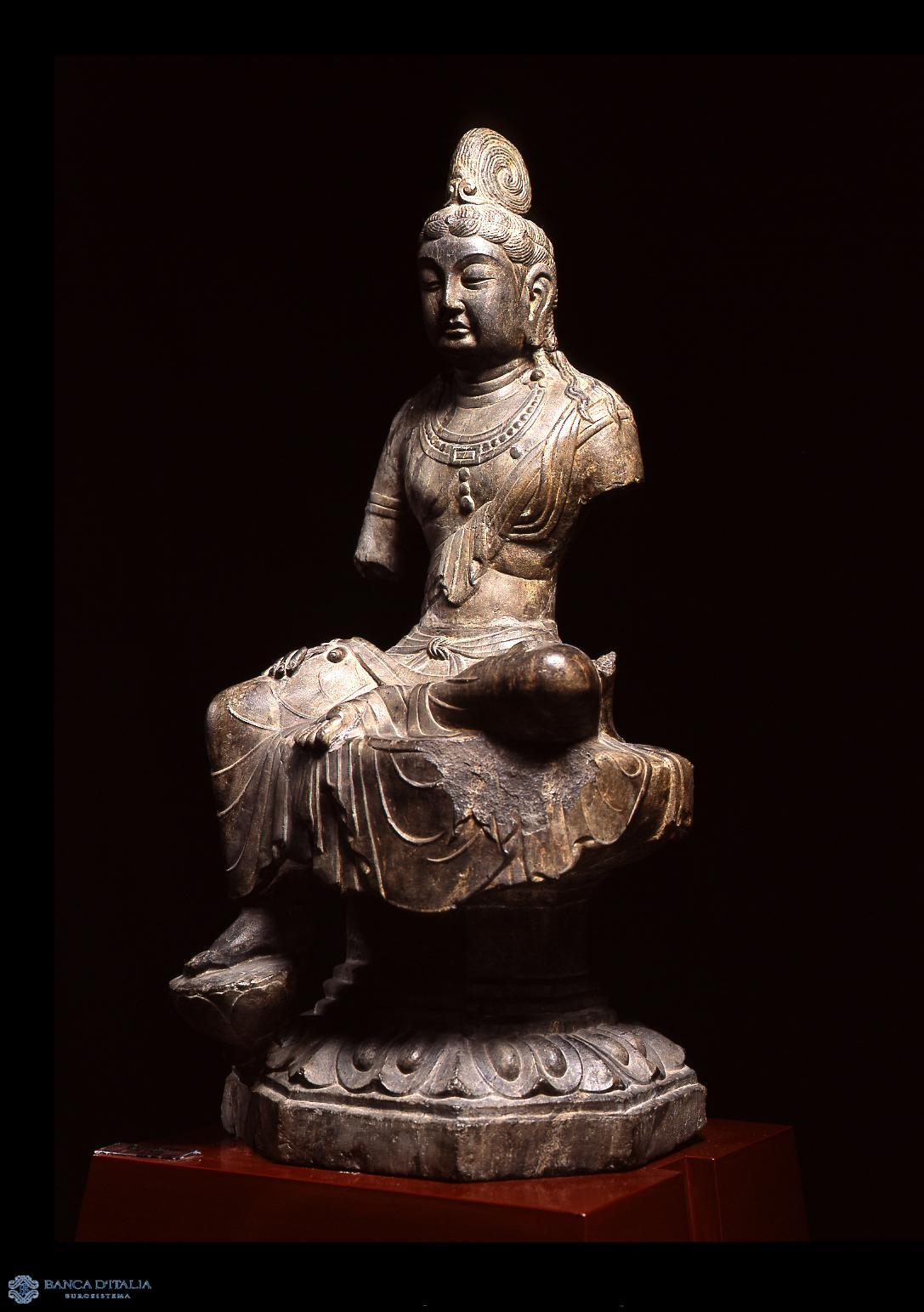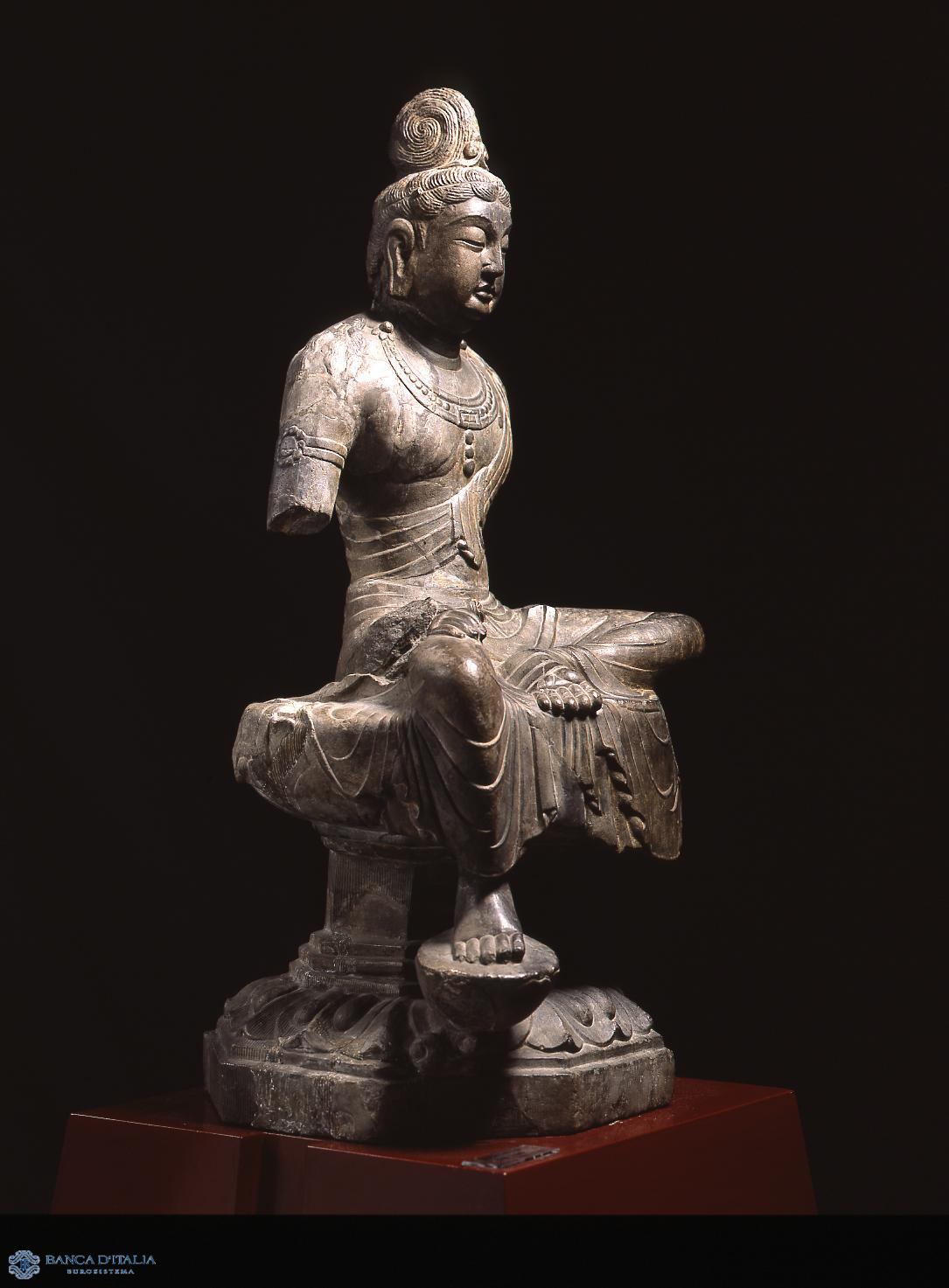The sculpture, which was in numerous fragments, has been reassembled with neutral-coloured plaster. The hand of the Bodhisattva’s missing right arm rests on his bent leg, which hangs down to a lotus flower on the lower section of the base; the left leg is characteristically bent across the pedestal, as in the lotus position. This is lalitasana, the position of ease, typically adopted by princes and befittingly used here for the Bodhisattva, who has a more earthly nature than the Buddha, usually represented in the pose of an ascetic. The clothes are also princely, consisting of a dhoti, which falls in drapes over the pedestal, and two scarves, one crossed over the chest and the other at the hips. The Bodhisattva’s hair is piled high on his head in an outsize knot, with several strands falling to his shoulders. He wears only a few, simple jewels.
The introduction of Buddhism in the first century AD brought about a profound change in the field of sculpture, which led to the adoption of new rules for representing the figure according to an official, stereotyped form. Statuary was exclusively religious and was limited to the portrayal of the Buddha or Bodhisattva. The popularity of Buddhism spread, especially from 600 on after the reunification of China, when religious sculpture became a major force of political integration, legitimizing imperial authority which promoted its installation in the temples.
The influences of Indian and central Asian art led to the style known as Tang ‘westernization’, which nonetheless acquired a specifically Chinese sensibility through the insistent and descriptive use of soft, flexible lines.
The statue dates from the first half of the Dynasty.
Statua di Bodhisattva seduto in lalitasana
Statue of a Bodhisattva Seated in Lalitasana
Sculpture
10th century AD
9th century AD
8th century AD
7th century AD
Religious

Date
Dinastia Tang (618-907 d.C.)
Material and technique
Pietra grigio scura
Measurements
cm 78 x 36 x 34
Compiler
Augusta Monferini


